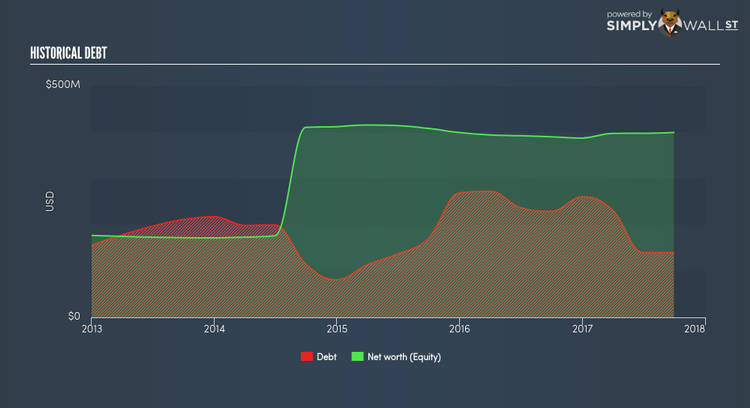Have You Considered These Bank Metrics For Blue Hills Bancorp Inc (NASDAQ:BHBK)?

Blue Hills Bancorp Inc’s (NASDAQ:BHBK) profitability and risk are largely affected by the underlying economic growth for the region it operates in US given it is a small-cap stock with a market capitalisation of USD $549.95M. A bank’s cash flow is directly impacted by economic growth as it is the main driver of deposit levels and demand for loans which it profits from. After the GFC, a set of reforms called Basel III was imposed in order to strengthen regulation, supervision and risk management in the banking sector. Basel III target banking regulations to improve the sector’s ability to absorb shocks resulting from economic stress which may expose financial institutions like Blue Hills Bancorp to vulnerabilities. Its financial position may weaken in an adverse macro event such as political instability which is why it is crucial to understand how well the bank manages its risks. High liquidity and low leverage could position Blue Hills Bancorp favourably at the face of macro headwinds. A way to measure this risk is to look at three leverage and liquidity metrics which I will take you through today. View our latest analysis for Blue Hills Bancorp

Why Does BHBK’s Leverage Matter?
A low level of leverage subjects a bank to less risk and enhances its ability to pay back its debtors. Leverage can be thought of as the amount of assets a bank owns relative to its shareholders’ funds. While financial companies will always have some leverage for a sufficient capital buffer, Blue Hills Bancorp’s leverage ratio of less than the suitable maximum level of 20x, at 6x, is considered to be very cautious and prudent. This means the bank has a sensibly high level of equity compared to the level of debt it has taken on to maintain operations which places it in a strong position to pay back its debt in unforeseen circumstances. Should the bank need to increase its debt levels to meet capital requirements, it will have abundant headroom to do so.
What Is BHBK’s Level of Liquidity?

Since loans are relatively illiquid, we should know how much of Blue Hills Bancorp’s total assets are comprised of these loans. Generally, they should make up less than 70% of total assets, but its current level of 81.22% means the bank has obviously lent out 11% above the sensible upper limit. This means its revenue is reliant on these specific assets which means the bank is also more exposed to default compared to banks with less loans.
What is BHBK’s Liquidity Discrepancy?
Banks profit by lending out its customers’ deposits as loans and charge an interest on the principle. Loans are generally fixed term which means they cannot be readily realized, however, customer deposits are liabilities which must be repaid on-demand and in short notice. The discrepancy between loan assets and deposit liabilities threatens the bank’s financial position. If an adverse event occurs, it may not be well-placed to repay its depositors immediately. Since Blue Hills Bancorp’s loan to deposit ratio of 104.12% is higher than the appropriate level of 90%, this level positions the bank in a risky spot given the adverse liquidity disparity between loan and deposit levels. Basically, for USD 1 of deposits with the bank, it lends out over USD 1 which is imprudent.
Final words
Now that you know to keep in mind these liquidity factors when putting together your investment thesis, I recommend you check out our latest free analysis report on Blue Hills Bancorp to see its growth prospects and whether it could be considered an undervalued opportunity.
PS. Interested in Blue Hills Bancorp’s competitors instead? Take a look at our free platform for a deep dive into other bank stocks.
To help readers see pass the short term volatility of the financial market, we aim to bring you a long-term focused research analysis purely driven by fundamental data. Note that our analysis does not factor in the latest price sensitive company announcements.
The author is an independent contributor and at the time of publication had no position in the stocks mentioned.
